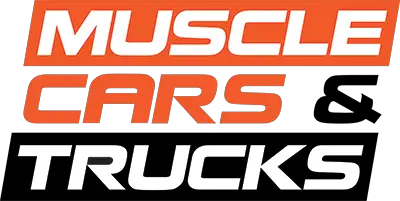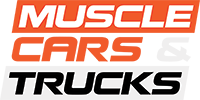Hemi 392 Summary
The “Hemi” name can trace its roots to Chrysler’s revolutionary hemispheric combustion chamber, where its unique shape reduced heat loss, in turn making fuel burn more efficiently, as well as providing more room for the valves. Today’s Hemi engines no longer feature the hemispheric design, but the name and branding remain strong. The current engine family are some of the most powerful V8 engines in the world today, and the 392 Hemi is the strongest atmospheric pushrod V8 on the market right now.
Historically, the 392 Hemi was found in full-size Chrysler products in the late 1950’s, such as the Imperial Custom, New Yorker, 300C, and 300D. However, it gained attention from hot rodders at the time, and found it to be a potent solution in drag racing. This displacement didn’t resurface in a production car until 2011 – over 50 years later.
Displacing 6.4L (392 cubic-inches) the new Apache V8 originally started life as a crate engine, branded as the 392 Hemi. Out of the box, this naturally aspirated pushrod V8 crate motor produced a stout 525 hp and 510 lb⋅ft torque. The 392 Hemi re-entered production cars with the launch of the 2011 Dodge Challenger SRT8. It replaced the 6.1L Hemi in the process, but remains part of the same engine family.
The 6.4L Apache 392 Hemi addressed some changes to give the engine some added benefits over its 6.1L predecessor. Beginning with an engine controller that directs valves to send air to newly designed intake manifold. The new manifold features long and short intake runners. Giving control over which runners are used based on engine RPM. Long runners under 4,800 RPM short runners over 4,800 RPM. Having variable runner operation makes for a more enjoyable driving experience. Delivering low speed torque and fuel economy while having muscle car power then you put your foot to the floor. Weight was saved during design with a new composite construction of the intake manifold.

Economy wasn’t forgotten when the 6.4L was designed, fuel saver technology was implemented. Because of the Apache’s ability to produce low end torque it’s able to produce enough torque on 4 cylinders in many more situations. Shutting down 4 cylinders allowing more economical operation without sacrificing drivability.
With low end torque and economy operations handled engineers added variable cam timing to address top end power. Allowing continuous adjustment of the cam centerline on wide open throttle operation improving airflow through the engine. Under part throttle operations it allows improved emissions and fuel economy. Variable cam timing to allows for optimal camshaft centerline relative to the crankshaft.
With increased power comes increased parts to take the strain. First engineers addressed the material properties of the piston pin to withstand the added power and torque. The cylinder block oil squirting system that squirts oil on the bottom side of the piston for added cooling of the piston. Increased oil flow through the entire engine. A revised windage tray and oil pan were added as well. A forged steel crankshaft with increased rolling pressures was added. Compression ratio was increased from 10.3:1 to 10.9: 1. The added compression ration improves fuel economy and helped engineers achieve the new added power form the 6.1L engine that was phased out.

Specifications
Block: 90-Degree pushrod V8, cast iron with 4 metal caps
Bore: 4.09 inches
Stroke: 3.72 inches
Compression ratio: 10.9-1
Fuel cut (max RPM): 6400 RPM
Firing order: 1-8-4-3-6-5-7-2
Valves: 2 Per cylinder
Intake: Aluminum manifold, naturally aspirated
Crankshaft: forged steel
Camshaft: Nodular Iron
16 Hydraulic Roller Lifters
Pistons: Hypereutectic Aluminum
Connecting Rods: Floating Pin
Intake valves: 16 hollow stem valves, 54.3 mm
Exhaust valves: 16 sodium filled valves, 42 mm
Exhaust Manifold: Aluminum Alloy
2 spark plugs per cylinder
NGK LZTR6AP11EG 6 heat range
Exhaust manifold: Aluminum alloy
Water Cooled, 14 quarts
Battery: 730 CCA
Horsepower: 485 @ 6000 RPM (Challenger, Charger, Durango, Grand Cherokee)
Torque: 475 @ 4200 RPM (Challenger, Charger, Durango, Grand Cherokee)
Lubrication System
Oil Capacity: 7 quarts
Oil Type: 0W-40 MS-12633
Wet Sump Lubcrication
Transmissions
ZF 8HP70 eight-speed auto: (Challenger, Charger, Durango, Grand Cherokee, Ram HD)
Tremec TR6060 six-speed manual: (Challenger)
Fuel System
Tank Size: 18.5 gallons Dodge Charger/Challenger, 24.6 gallons Jeep Grand Cherokee/Dodge Durango, 31 gallons Ram 2500 HD
Fuel Type: Premium recommended 0-15% ethanol
Crate Engine Availability: Yes
The Hemi 392 V8 is available as a Mopar crate engine for $9,960.00.

Performance And Fuel Economy:
Jeep Grand Cherokee SRT
0-60: 4.4 sec
¼ mile 13.2 @ 105 MPH
Horsepower: 475
Torque: 470
City MPG: 13
Highway MPG: 19
Towing capacity 7,200 lbs
Dodge Charger R/T 392
0-60: 4.2sec
¼ mile: 12.6 sec @ 113.8 MPH
City MPG: 15
Highway MPG: 25
Dodge Challenger R/T 392
0-60 4.2 sec
1.4 mile: 12.5 @ 116 MPH
City MPG: 15
Highway MPG 25
For more muscle car, truck and SUV engine info, please visit our ever-developing Engines page.



